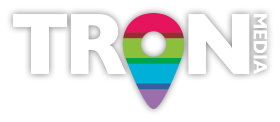
Where to place keywords to get results!
We all know that keywords are essential in order to climb through the ranks and make yourself know on Google, Bing and other search engines. So, why is it that some websites, that employ the use of keywords, simply do not work?
We have stressed many times before to not overuse a keyword. Why? Well, it may prevent the piece from flowing well and you could be accused of ‘Keyword Stuffing’ and in result you will be sent to Google prison. Okay, not quite prison but you will be penalised. In order to create a great piece of content concentrate on the quality of the piece – Will people leave the page with that extra bit of knowledge? Will people want to share it? That sort of thing.
How do you create a piece without many keywords? Simply the placement. Where you put your keyword can make it easier and more prominent for a search engine to read your page and rank it.
So, where are these places?
Title Tag
This is the bit of text that shows up in search engines and on open tabs. This is a really good place to insert a keyword because it tells search engines and people what your site is about. This can also be a deciding factor on whether a person will click through to your website, so it is important to ensure you write title tags for humans but format them for search engines too. Below is an example of an optimised SEO Meta Description from Tron Media.

What to do:
- Put your most important keyword at the start of the title tag
- Ensure that each title tag is different to avoid duplicated content filters
- Title tag should be 6 – 7 words long. Choose words that correspond with the content on the page but not overloaded with words that don’t make sense. Try not to use full sentence with connectives such as ‘and’ ‘or’ because this dilutes the important words.
Meta Tag
This tool is mostly for search engines to read what is on the article/page. This is why it should definitely contain 1 or 2 of the pages targeted keywords. This is why, Meta tags often do not make sense because they are filled with keywords. Meta tags are found in the HTML code between the open and closing head tags.
Meta Descriptions
This is the piece of text that is show when you search for something. They are usually 135 – 160 characters long, however recently Google has been testing longer Meta descriptions (you can read all about it here). This is just a short summary the page it links to. Including keywords makes it easier for the search engine and the customer to understand what your page is regarding. Make sure you don’t duplicate the Meta descriptions as you can be penalised by Google.
URL
It has been found that URL’s that are descriptive, concise and readable are viewed as more trustworthy. Including the keyword into the URL will help search engine bots read your page. Having an easy to read URL will also help a user understand where they are on the page. Check out this helpful info graphic showing you how to have an SEO friendly URL structure.
Do you need help on where to place keywords? Or do you simply not have time to write SEO optimised content for your site? We have many ways you can get in contact with us today. You can speak to one of our trained digital analysts today visit our contact page or drop us a message on our live chat!
